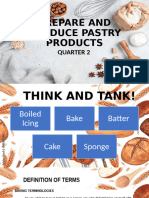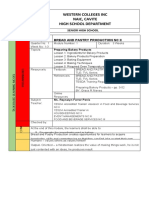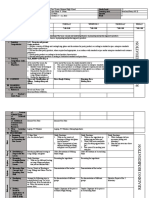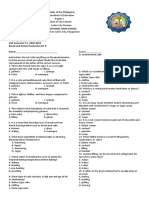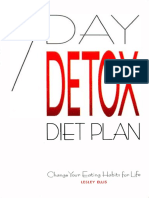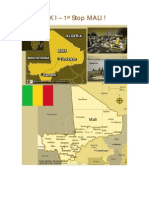0 ratings0% found this document useful (0 votes)
96 viewsPlease Familiarize Yourself To The Following
Please Familiarize Yourself To The Following
Uploaded by
Aries ManluluThis document provides guidance on various baking techniques and terms:
1. It explains how to measure different amounts of flour and separate eggs.
2. It describes signs that butter has been sufficiently creamed and the roles of various ingredients like flour, fat, yeast and sugar in baking.
3. It distinguishes between extract and emulsion flavors, cake and all-purpose flour, and beaten egg whites.
4. It also covers mixing methods, butter vs margarine, fat substitutes, pan size selection, pre-heating, dough resting, portioning, doneness checks, bread storage, pie vs tart, portioning for petits fours, and plating petits fours.
Copyright:
© All Rights Reserved
Available Formats
Download as DOCX, PDF, TXT or read online from Scribd
Please Familiarize Yourself To The Following
Please Familiarize Yourself To The Following
Uploaded by
Aries Manlulu0 ratings0% found this document useful (0 votes)
96 views1 pageThis document provides guidance on various baking techniques and terms:
1. It explains how to measure different amounts of flour and separate eggs.
2. It describes signs that butter has been sufficiently creamed and the roles of various ingredients like flour, fat, yeast and sugar in baking.
3. It distinguishes between extract and emulsion flavors, cake and all-purpose flour, and beaten egg whites.
4. It also covers mixing methods, butter vs margarine, fat substitutes, pan size selection, pre-heating, dough resting, portioning, doneness checks, bread storage, pie vs tart, portioning for petits fours, and plating petits fours.
Original Title
ORAL QUESTIONNING
Copyright
© © All Rights Reserved
Available Formats
DOCX, PDF, TXT or read online from Scribd
Share this document
Did you find this document useful?
Is this content inappropriate?
This document provides guidance on various baking techniques and terms:
1. It explains how to measure different amounts of flour and separate eggs.
2. It describes signs that butter has been sufficiently creamed and the roles of various ingredients like flour, fat, yeast and sugar in baking.
3. It distinguishes between extract and emulsion flavors, cake and all-purpose flour, and beaten egg whites.
4. It also covers mixing methods, butter vs margarine, fat substitutes, pan size selection, pre-heating, dough resting, portioning, doneness checks, bread storage, pie vs tart, portioning for petits fours, and plating petits fours.
Copyright:
© All Rights Reserved
Available Formats
Download as DOCX, PDF, TXT or read online from Scribd
Download as docx, pdf, or txt
0 ratings0% found this document useful (0 votes)
96 views1 pagePlease Familiarize Yourself To The Following
Please Familiarize Yourself To The Following
Uploaded by
Aries ManluluThis document provides guidance on various baking techniques and terms:
1. It explains how to measure different amounts of flour and separate eggs.
2. It describes signs that butter has been sufficiently creamed and the roles of various ingredients like flour, fat, yeast and sugar in baking.
3. It distinguishes between extract and emulsion flavors, cake and all-purpose flour, and beaten egg whites.
4. It also covers mixing methods, butter vs margarine, fat substitutes, pan size selection, pre-heating, dough resting, portioning, doneness checks, bread storage, pie vs tart, portioning for petits fours, and plating petits fours.
Copyright:
© All Rights Reserved
Available Formats
Download as DOCX, PDF, TXT or read online from Scribd
Download as docx, pdf, or txt
You are on page 1of 1
PLEASE FAMILIARIZE YOURSELF TO THE FOLLOWING
1. How do you measure 2 and ¼ cups of flour?
A: Spoon flour into measuring (1 cup) cup and level for ¾ cups, use ½ cup and ¼ cup
2. If you need 6 pieces eggs, how should you open them?
A: Open eggs one at a time, cracking open one egg in a small bowl; if okay, transfer to bigger
bowl, if okay, transfer to bigger bowl, open another egg into the small bowl; if okay transfer to
the bigger bowl and so on..
3. How would you know that you have creamed the butter well enough?
A: The butter is lighter color
4. What is the role of each ingredient- flour,fat, yeast, sugar?
A:
Flour- gluten development
Fat- shorten the gluten strands
Yeast- rise the dough
Sugar- food of the yeast
5. What is the difference between extract and flavour emulsion? Cake flour and all purpose flour?
A: Flavor extract is alcohol based, while a flavour emulsion is oil based; cake flour has the least
amount of gluten of all wheat flours, making it best for light, delicate products such as sponge
cakes.
6. How do you know that you have beaten the egg whites to peaks?
A: The peaks of the eggwhites stay up even when you invert the bowl, or it is of thick
consistency.
7. What mixing methods were demonstrated in baking products?
A: Extract is alcohol based, while a flavour emulsion is fat based
8. What is the difference between butter and margarine?
A: Butter is from animals and more expensive, and margarine is from plants and more
affordable.
9. What fat substitute can you use for breads?
A: Margarine, mixture of margarine and butter, other fat substitutes
10. Why is it important to select the right pan size for baking products?
A: if pan is too big, batter will be spread over a large area it will overcook if pan is too short the
butter will overflow.
11. Why do you pre-heat?
A. So oven is in the desired temperature before putting the product inside the oven
12. How long shoud pre-heating be done?
A. Can be 15-30 minutes or until desire temperature is reached
13. Why do you let dough rest after kneading?
A. To let gluten strands rest so that they will break up during foming
14. How do you carry heavy loads?
A. Bend knees , carry load and lift up
15. How should you portion dough?
A. By weight , by scoop/ladle or by count
16. How do you check for doneness in any baked products?
A. By checking the internal temperature of the product , or by inserting a cake tester/
toothpick in the middle of the product and checking if the batter will still to the tester.
17. Where do you stock breads that will be used 2 days from now ?
A. Put breads that will not be used immediately in a tightly sealed bag in a freezer.
18. What’s the different between a pie and tarter?
A. A pie is for multiple serving , while a tarter is for a single serving.
19. How should you portion products in making petits fours?
A. By weight , by scoop/ladle or by count.
20. How can you plate a selection of petits fours to a guest?
A. Put in a plate (depending on enterprise standards) and add garnishing and chocolate
syrup/fruit syrup)
You might also like
- A Lesson Plan in Science GO, GROW & GLOWDocument3 pagesA Lesson Plan in Science GO, GROW & GLOWWynetot Tonido87% (45)
- C9 Booklet India March2022Document24 pagesC9 Booklet India March2022salim khanNo ratings yet
- Quiz Milk and Milk ProductsDocument2 pagesQuiz Milk and Milk ProductsFlorence Slpan SuarzNo ratings yet
- Bread and Pastry Production ReviewerDocument1 pageBread and Pastry Production Reviewerneil derickNo ratings yet
- BPP PRE TEST and POST TESTDocument3 pagesBPP PRE TEST and POST TESTSCMCST Inc100% (3)
- Question and AnswerDocument4 pagesQuestion and AnswerNikol DayanNo ratings yet
- Technology and Livelihood Education: Quarter 3, Wk.1-2 - Module 1Document14 pagesTechnology and Livelihood Education: Quarter 3, Wk.1-2 - Module 1Regina Minguez SabanalNo ratings yet
- 1cup 128g, 3/4 Cup 96gDocument5 pages1cup 128g, 3/4 Cup 96gGailyDelosSantosNo ratings yet
- Q3 Summative TestDocument2 pagesQ3 Summative TestRochelle Mae G. Irinco100% (1)
- Module 5 Bread and PastryDocument2 pagesModule 5 Bread and PastryMagelyn NBNo ratings yet
- Bread and Pastry Production MidtermDocument4 pagesBread and Pastry Production MidtermRosalyn HerediaNo ratings yet
- Project Plan#3 (4th QTR)Document3 pagesProject Plan#3 (4th QTR)Rosann RosannNo ratings yet
- Activity Sheet On Major and Minor IngredientsDocument14 pagesActivity Sheet On Major and Minor IngredientsNizelCalmerinBaesNo ratings yet
- Las BPP Fill and Decorate Pastry ProductsDocument6 pagesLas BPP Fill and Decorate Pastry ProductsEsmeraldo Fulgar100% (1)
- Grade 10Document3 pagesGrade 10Kristine HensonNo ratings yet
- Summative Test BPP 02132022Document2 pagesSummative Test BPP 02132022Fernando JoseNo ratings yet
- Q2 - BPP 10 - Lesson 1-Prepare and Produce Pastry ProductsDocument47 pagesQ2 - BPP 10 - Lesson 1-Prepare and Produce Pastry Productscanomarisol776No ratings yet
- Learning Activity Sheets Tvl-He-Cookery-Grade 12: EmbutidoDocument4 pagesLearning Activity Sheets Tvl-He-Cookery-Grade 12: EmbutidoEthan Andro Puno100% (1)
- Lesson Plan in Bread and Pastry ProductiDocument2 pagesLesson Plan in Bread and Pastry ProductiBernardino VirgilioNo ratings yet
- Learning Plan in K-12 Bread and Pastry ProductionDocument38 pagesLearning Plan in K-12 Bread and Pastry ProductionGRACE WENDIE JOY GRIÑONo ratings yet
- 3rd Periodical TestDocument5 pages3rd Periodical TestLeah Uljer100% (3)
- BPP LR Week 1 PDFDocument15 pagesBPP LR Week 1 PDFFlexie GraceNo ratings yet
- BPP PPT August 29Document51 pagesBPP PPT August 29Sharon DannugNo ratings yet
- DBES 3Q TLE 9 Bread and PastryDocument49 pagesDBES 3Q TLE 9 Bread and PastryJohn Renzel FabroNo ratings yet
- BPP Las Q1 W20Document3 pagesBPP Las Q1 W20Dezz Balleta-BonaNo ratings yet
- Home Economics-Bread and Pastry ProductionDocument6 pagesHome Economics-Bread and Pastry ProductionJuan L. CruzNo ratings yet
- BPP Q2M3 and m4Document16 pagesBPP Q2M3 and m4jane entunaNo ratings yet
- Tle BPP10 Q2 M2Document9 pagesTle BPP10 Q2 M2Genevie SisonNo ratings yet
- Q2 - (LAS) BPP WK 4 PDFDocument3 pagesQ2 - (LAS) BPP WK 4 PDFJazer LeuterioNo ratings yet
- Module 4 Bread and PastryDocument3 pagesModule 4 Bread and PastryMagelyn NBNo ratings yet
- DESSERTSDocument3 pagesDESSERTSma jaseth salazar100% (1)
- Action Plan Bread N Pastry ProductionDocument1 pageAction Plan Bread N Pastry ProductionDaisy Esteban100% (1)
- Summative Test in BPPDocument2 pagesSummative Test in BPPlilibeth odal100% (2)
- Bread and Pastry Quarter 3 Week 6: CustardDocument5 pagesBread and Pastry Quarter 3 Week 6: CustardMean MirafuentesNo ratings yet
- TLE GRADE 9 and 10 Bread and Pastry Production Quarter 1-Week 1 Prepare and Produce Bakery ProductsDocument6 pagesTLE GRADE 9 and 10 Bread and Pastry Production Quarter 1-Week 1 Prepare and Produce Bakery ProductsAlyanna Pangilinan100% (1)
- JOB SHEET - Dinner RollsDocument2 pagesJOB SHEET - Dinner RollsJoannix V Villanueva100% (1)
- Canteen Best PracticesDocument3 pagesCanteen Best PracticesKean AustriaNo ratings yet
- Reviewer in Summative Test I BPPDocument4 pagesReviewer in Summative Test I BPPAR EZNo ratings yet
- Bread and Pastry Production: Technology and Livelihood Education Learning ModuleDocument29 pagesBread and Pastry Production: Technology and Livelihood Education Learning Moduleyannie montefalco100% (1)
- Western Colleges Inc Naic, Cavite High School DepartmentDocument4 pagesWestern Colleges Inc Naic, Cavite High School DepartmentReynalyn FerrerNo ratings yet
- Directions: Read and Answer Each of The Following Questions Correctly by Encircling The Letter of The BestDocument2 pagesDirections: Read and Answer Each of The Following Questions Correctly by Encircling The Letter of The BestRovecil Flores100% (1)
- 12 - Written TestDocument5 pages12 - Written TestJanu MaglenteNo ratings yet
- Camaman-An National High School: Division of Cagayan de Oro City Camaman-An, Cagayan de Oro CityDocument4 pagesCamaman-An National High School: Division of Cagayan de Oro City Camaman-An, Cagayan de Oro CityPipoy Casicas PailagaoNo ratings yet
- Bread & Pastry ProductionDocument4 pagesBread & Pastry ProductionCristina D. Guina100% (1)
- Temperature Use For Different Types of CakesDocument24 pagesTemperature Use For Different Types of CakesVanesa EscoberNo ratings yet
- BPP Summative2Document3 pagesBPP Summative2Ceasar Ryan AsuncionNo ratings yet
- DLL Bread and Pastry Week 11Document7 pagesDLL Bread and Pastry Week 11Riza Ponce100% (2)
- On Pies and PastriesDocument44 pagesOn Pies and PastriesLouie Kem Anthony Babaran100% (3)
- Standard Score Sheet For Swiss RollDocument1 pageStandard Score Sheet For Swiss Rollkevin anda100% (1)
- Department of Education: The Following Are The Characteristics of A Good Plated Cake. To WitDocument5 pagesDepartment of Education: The Following Are The Characteristics of A Good Plated Cake. To WitLani DolleroNo ratings yet
- I. Multiple Choice: Directions: Read and Analyze The Statement Carefully. Choose The Correct Answer in Your Answer SheetDocument2 pagesI. Multiple Choice: Directions: Read and Analyze The Statement Carefully. Choose The Correct Answer in Your Answer SheetMolash Leiro100% (1)
- Portion Control On Pie MakingDocument4 pagesPortion Control On Pie MakingJudi Ann Devecente Musnit100% (1)
- Tle BPP10-Q3-M15Document9 pagesTle BPP10-Q3-M15ShekinahJewelNo ratings yet
- (Qii-L1) Bpp2-Prepare & Display Petit FoursDocument10 pages(Qii-L1) Bpp2-Prepare & Display Petit FoursVptnhs Lou Quitua100% (1)
- Dry and Liquid IngredientsDocument29 pagesDry and Liquid IngredientsRac Reopta100% (1)
- Week 9 - BPPDocument3 pagesWeek 9 - BPPAlve Marie YebanNo ratings yet
- PecsDocument9 pagesPecsPrincess Lumaday100% (1)
- TLE 10 First Summative TestDocument2 pagesTLE 10 First Summative TestMaila Santos CarilloNo ratings yet
- Module 1Document42 pagesModule 1Lina Paglinawan100% (3)
- Co BPP 3RD QuarterDocument43 pagesCo BPP 3RD QuarterMayra ArranguezNo ratings yet
- TVL BP11 Week4Document3 pagesTVL BP11 Week4Riza PonceNo ratings yet
- Bread and Pastry NC II CGDocument2 pagesBread and Pastry NC II CGKim CaguioaNo ratings yet
- REVIEWER-BPPDocument2 pagesREVIEWER-BPPlorilyn guiananNo ratings yet
- Andrei EssayDocument1 pageAndrei EssayAries ManluluNo ratings yet
- Tips On The Proper Use and Care of The Following:: SalinometerDocument4 pagesTips On The Proper Use and Care of The Following:: SalinometerAries ManluluNo ratings yet
- RyzaDocument2 pagesRyzaAries ManluluNo ratings yet
- What Is FLASH?: Lesson #1 Multimedia Animation M'JersheyDocument2 pagesWhat Is FLASH?: Lesson #1 Multimedia Animation M'JersheyAries ManluluNo ratings yet
- Andrei Josh Bacani: Issue: Corona Virus Pandemic vs. Economic CrisisDocument2 pagesAndrei Josh Bacani: Issue: Corona Virus Pandemic vs. Economic CrisisAries ManluluNo ratings yet
- Batch 1: Monitoring SheetDocument2 pagesBatch 1: Monitoring SheetAries ManluluNo ratings yet
- Leo BenesaDocument4 pagesLeo BenesaAries Manlulu100% (2)
- 2-En-Sandwiches - The Ultimate Sandwich Recipe Book - Quick and Easy Sandwich RecipesDocument112 pages2-En-Sandwiches - The Ultimate Sandwich Recipe Book - Quick and Easy Sandwich RecipesCecilia Carolina CaroCeci NavaNo ratings yet
- MOdule 3Document12 pagesMOdule 3Istehkaam PakistanNo ratings yet
- Filament Dallas Lunch MenuDocument8 pagesFilament Dallas Lunch MenuEaterNo ratings yet
- Frito Lay Cook BookDocument158 pagesFrito Lay Cook BookKristy Le100% (1)
- RecipesDocument41 pagesRecipesNithya Gangadhar100% (4)
- Water Kefir GuideDocument8 pagesWater Kefir GuideKen NanNo ratings yet
- List of Food and Drinks With CaffeineDocument13 pagesList of Food and Drinks With CaffeineRanice Krizelle LomibaoNo ratings yet
- Birthday Party Packages: Revised June 2019Document8 pagesBirthday Party Packages: Revised June 2019negsNo ratings yet
- Starbucks Secret MenuDocument7 pagesStarbucks Secret Menurhonamundo100% (1)
- The New Dirty DozenDocument3 pagesThe New Dirty DozenNiksr GnoNo ratings yet
- Detox 7 Day DietDocument194 pagesDetox 7 Day DietSundar PrabhuNo ratings yet
- Q2 TLE Day5Document23 pagesQ2 TLE Day5trixie慰No ratings yet
- Milk ProjectDocument25 pagesMilk Projectapi-589431128No ratings yet
- Chicken & Chorizo Ragu Recipe - BBC Good FoodDocument2 pagesChicken & Chorizo Ragu Recipe - BBC Good FoodyoshesheplaneNo ratings yet
- Menubook Update 260223Document32 pagesMenubook Update 260223reza ariandaNo ratings yet
- Menu Cafe Senja 2024Document2 pagesMenu Cafe Senja 2024mhmmddaffaa95No ratings yet
- Triptico de Cuy Chactado en InglesDocument2 pagesTriptico de Cuy Chactado en InglesEna Luz Miranda Llamoca100% (2)
- How To Make A Soda GembiraDocument8 pagesHow To Make A Soda GembiraRizqi Alghiffary0% (1)
- Salad RecipesDocument9 pagesSalad RecipesTessaNo ratings yet
- IKK1Document8 pagesIKK1ikkNo ratings yet
- Activity EnglishDocument2 pagesActivity EnglishMarta GortNo ratings yet
- NYC Cookie RecipeDocument5 pagesNYC Cookie Recipelixiaojie1998No ratings yet
- Business Presentation ICE CREAMDocument8 pagesBusiness Presentation ICE CREAMSohan PatleNo ratings yet
- New Bali - End Report Het All Principal.0524 - SPG MDDocument172 pagesNew Bali - End Report Het All Principal.0524 - SPG MDmadebudiarsi 02No ratings yet
- Stir Fry & Sauces ClassDocument14 pagesStir Fry & Sauces ClassmaveeisinNo ratings yet
- 3.1food Service AreasDocument6 pages3.1food Service AreasNiharNo ratings yet
- Excel On 20 July 2024Document4 pagesExcel On 20 July 2024patelayushactionNo ratings yet
















